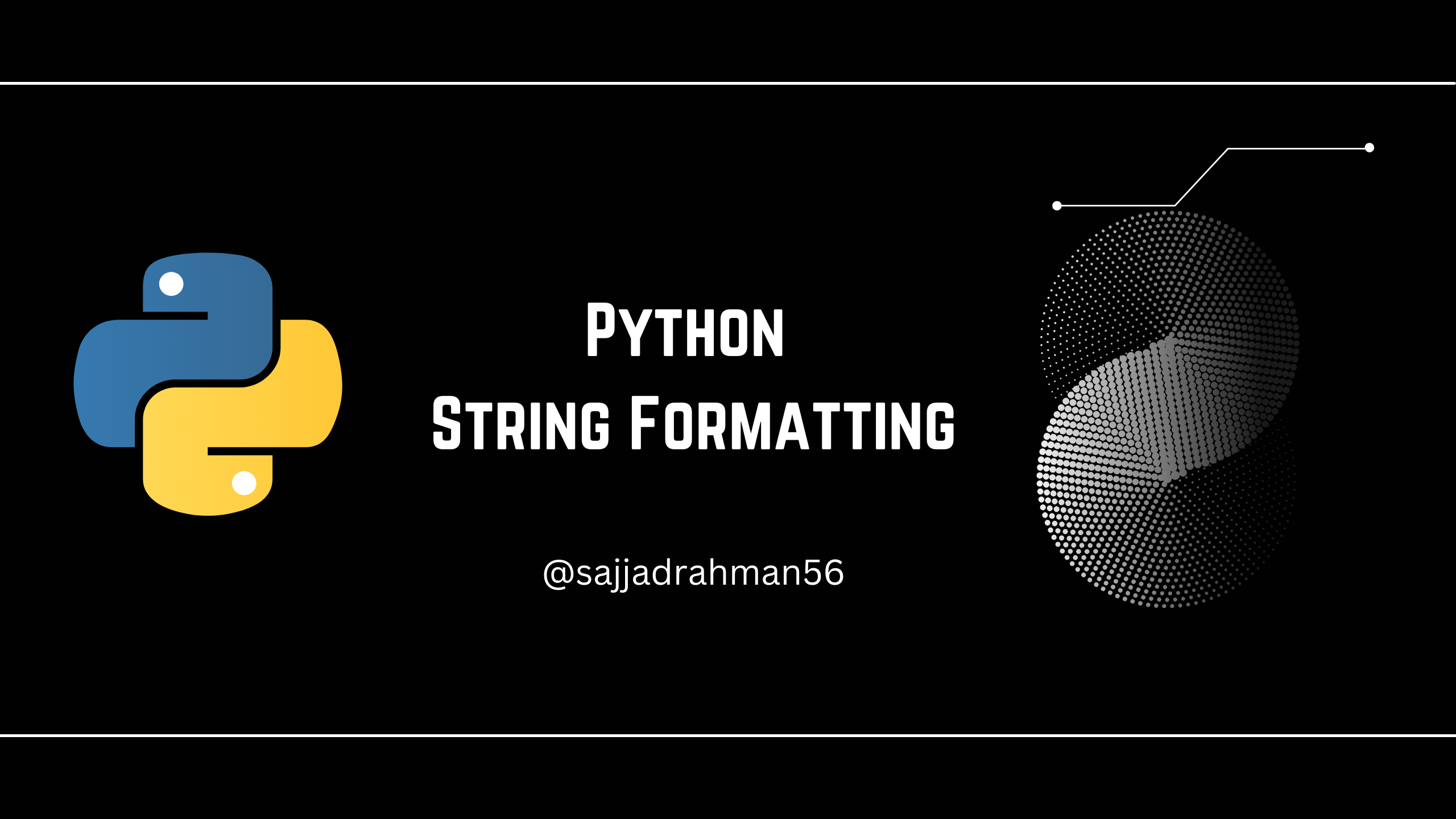String Formatting in Python
 Sajjad Rahman
Sajjad Rahman
String formatting is a fundamental aspect of Python programming that helps you create well-structured and dynamic strings. It allows you to embed variables and values into predefined placeholders within a string. In this blog, we will explore two key methods for string formatting in Python: the .format() method and f-strings.
Using the .format() Method
The .format() method is a traditional way of formatting strings in Python. It involves using placeholders within a string and supplying values to replace these placeholders. Let's delve into some examples to grasp this concept.
Basic Usage of .format()
print('This is a string {} through the format method with the help of {}'.format('INSERTED', 'CURLY_BRACKETS'))
In this example, we have two placeholders ({}) in the string, and the .format() method takes two arguments, which are inserted into these placeholders in the order they appear.
print('The {2} {1} {0}'.format('fox', 'brown', 'quick'))
Here, we explicitly specify the positions of the values to insert. It's important to note that Python uses zero-based indexing, so the order of insertion is 'quick', 'brown', 'fox'.
Named Parameters
You can also use named parameters to enhance readability:
print('The {q} {b} {f}'.format(f='fox', b='brown', q='quick'))
This approach allows you to assign values to placeholders by name, making your code more self-explanatory.
Formatting Floating-Point Numbers
String formatting isn't limited to inserting text; it's equally valuable when dealing with numbers, especially floating-point values. You can control the width and precision of floating-point numbers using the following syntax: {value:width.precisionf}.
result = 65 / 989
print('The result is {}'.format(result))
print('The result is {r}'.format(r=result))
print('The result is {:2.4f}'.format(result))
In the above example, :2.4f specifies that we want the result to be displayed with a width of 2 characters and a precision of 4 decimal places. You can adjust these values to suit your requirements.
Embracing F-Strings
F-strings, introduced in Python 3.6 and later versions, offer a more concise and intuitive way to format strings:
name = 'John Doe'
print(f'Hello, I am from England, and my name is {name}')
With f-strings, you simply prefix your string with an 'f' and use curly braces {} to directly embed variables or expressions within the string. This approach enhances code readability, particularly when working with variables.
In summary, string formatting in Python empowers you to create dynamic and well-structured strings. While the .format() method remains versatile and suitable for older Python versions, f-strings provide a cleaner and more readable option for modern Python development.
Choose the method that aligns with your project's requirements and coding style. Happy coding! Stay tuned
Welcome to my digital corner! 🌟 Connect with me to explore insightful discussions, coding adventures, and more. Find me on:
🐦 Twitter: @sajjadrahman56 🐦
🐙 GitHub: sajjadrahman56 🐙
🔗 LinkedIn: sajjadrahman56
Let's learn, collaborate, and grow together! 🚀
Subscribe to my newsletter
Read articles from Sajjad Rahman directly inside your inbox. Subscribe to the newsletter, and don't miss out.
Written by

Sajjad Rahman
Sajjad Rahman
As a Flutter developer, I am constantly learning and trying to implement new concepts into my projects. In addition, I devote time to studying Machine Learning. I have a passion for contributing to open-source projects.